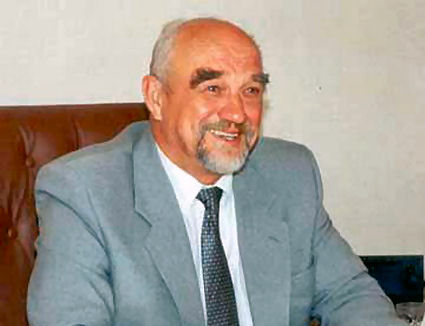
Negotiations on the Transnistria Conflict in a Deep Freeze
Publication: Eurasia Daily Monitor Volume: 6 Issue: 186
By:

Authorities in Tiraspol are watching the political deadlock in Chisinau with barely concealed satisfaction. Moldova’s political and constitutional crisis since April has further deepened the freeze on both tracks of negotiations on the Transnistria conflict: the international 5+2 format and the bilateral right bank – left bank dialogue. Tiraspol is in a position to argue irrefutably that negotiations can only resume after Moldova resolves its internal crisis and elects a head of state. Possible failure of the presidential election would trigger new parliamentary elections in Moldova, which would in turn deepen and prolong the negotiating freeze on the Transnistria conflict even further (EDM, October 7).
Meanwhile, Tiraspol authorities are themselves divided into two rival political and business camps: one led by “president” Igor Smirnov and the Smirnov family-controlled Respublika party, the other led by Yevgeny Shevchuk and his Obnovlenie [Renewal] party, which holds the majority in Transnistria’s Supreme Soviet. The Smirnov camp recently succeeded in unseating Shevchuk from the Supreme Soviet’s chair and replacing him with Anatoly Kaminski, a Smirnov ally. The Sheriff business conglomerate, the strongest economic power locally, maneuvers uneasily between the two camps.
Each camp in Tiraspol has its protectors in Moscow. The party of power there, United Russia, works with the Shevchuk camp under an inter-party cooperation agreement; whereas the relevant elements in Russia’s secret services, as well as Gazprom, are aligned with the Smirnov camp. Politics in Tiraspol are basically a Russian affair, with scant local input. Smirnov is a Siberian carpetbagger, cast by Moscow as president of the “Dniester Moldovan Republic” (Transnistria’s “official” name). Shevchuk is nominally a Ukrainian, linguistically Russified and politically Russocentric (a typical Novorossiya product). Russians, mostly non-native to Transnistria, control the political and security apparatus while Moldovans, though forming a plurality of Transnistria’s population, are practically excluded from political participation.
Tiraspol’s two rival camps hold broadly similar positions on the conflict with Moldova, with some nuanced differences. Following the installation of the new Moldovan government (EDM, October 2), Smirnov and Shevchuk gave detailed presentations of their respective positions in separate news conferences in Tiraspol (Supreme Soviet press release, September 25; Olvia-press [Tiraspol], Interfax, September 28, October 1, 2).
Both Smirnov and Shevchuk insist that Russian troops must remain stationed in Transnistria as a “factor of stability” and in line with Russia’s interests. Both leaders characterize the Russian “peacekeeping” operation as one of the most successful examples worldwide and therefore worth continuing on an open-ended basis. Smirnov and Shevchuk both profess to wish constructive relations between Transnistria and the neighbor state Moldova –in other words, cementing the secession and seeking its de facto acceptance by Moldova. Both leaders are prepared to resume negotiations or dialogue toward that end, once Moldova’s political leadership has fully constituted itself.
Smirnov adds some significant nuances of his own. He emphasizes the sharply divergent “development vectors,” with right-bank Moldova oriented toward the European Union whereas Transnistria “never changed its Russian orientation.” Smirnov, moreover, accuses Chisinau of “hiding behind its neutrality in order to squeeze Russia out of here.” He invokes Transnistria’s 2006 referendum with its twin decisions to maintain “sovereignty” and seek common development with Russia. And he proposes to call a further referendum in 2010 for a decision to join the Russian Federation with the status of a constituent federal unit.
Shevchuk’s public discourse is less radical. In a more sophisticated version of good-riddance, Shevchuk wishes Moldova well in the quest for integration with the E.U. but he wants Transnistria to develop separately as a stable, prosperous state. He blames Transnistria’s dire economic situation on the lack of international recognition and the E.U.-backed customs regime introduced by Ukraine since 2006 on the Transnistria sector of the Moldova-Ukraine border, under the E.U. Border Assistance Mission’s (EUBAM) watch. Although Transnistria business entities are freely conducting legal export-import operations across that border, Tiraspol authorities complain about a blockade. With this argument they seek to squeeze additional economic aid from Moscow.
In Shevchuk’s vein, Galina Antyufeyeva, Chair of the Supreme Soviets legal affairs committee, calls for good-neighborly relations between Moldova’s new authorities and Transnistria as a separate state (Interfax, October 1). Antyufeyeva, long responsible for “human rights” issues in the Supreme Soviet, is the wife of Russian MVD General Vladimir Antyufeyeva, Transnistria’s “state security minister.”
A portion of Russian aid is being channeled by Russia’s Duma directly to Transnistria’s Supreme Soviet, where Shevchuk’s party holds the majority. Initiated by the United Russia party as a humanitarian assistance project, this aid runs above-board at an average of $30 million annually since 2006. Gazprom’s aid to Transnistria is incomparably larger, however. According to official data, Transnistria has piled up $1.3 billion in debts to Gazprom for past deliveries of gas, in addition to almost $700 million in penalties. The debts are growing with each passing year but Gazprom makes no attempt to collect on the debts (Interfax, September 30, October 1).
Russia’s ambassador to Moldova, Valery Kuzmin, continues meeting with both rivals in Tiraspol, in the wake of the Smirnov-Shevchuk schism. Authorities in Moscow increasingly regard Transnistria as a de facto extension of Russia. This idea has undergirded Russia’s official policy all along, although it was only expressed publicly by nationalist circles.
At present, semi-official institutions linked with the Russian government are starting to propagate this idea openly. On September 26 the Kremlin-affiliated consultant Vyacheslav Nikonov, head of the Russky Mir (Russian World) Foundation in Moscow, inaugurated a branch office of Russian World in Tiraspol. He also announced the intention to create Russian World offices in the cities of Ribnita and Bendery (the latter is a right-bank bridgehead of left-bank Transnistria). In both cities, Russians are the third-largest ethnic element, behind Moldovans and Ukrainians, as is the case throughout Transnistria.
Despite these demographics and the 1,000 kilometers separating Russia from Transnistria, a proprietary Russian attitude toward the territory is gaining strength. Nikonov recently declared “Transnistria as a part of the Russian world, one of its most important components” (www.vesti.ru, September 26). Previously espoused by Russian nationalist publicists outside the official circles, or loosely affiliated with them, this idea is now being propagated from the top of Russia’s political establishment.




